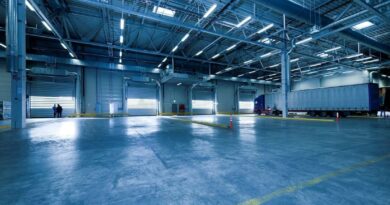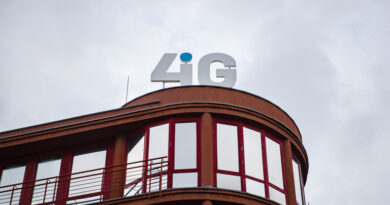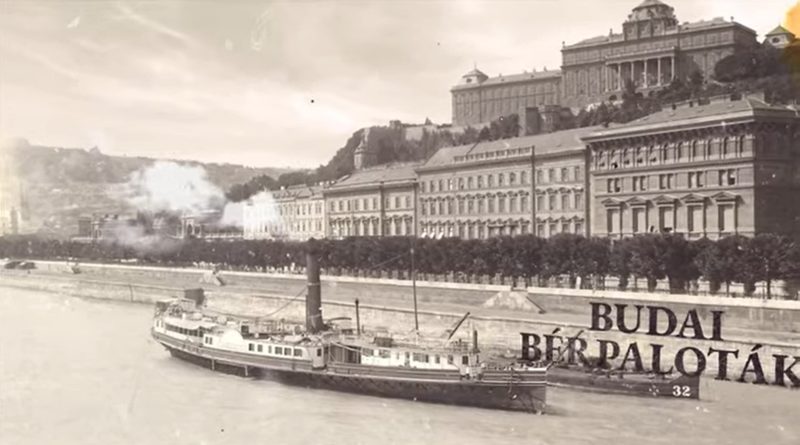Central Europe: industrial property take-up increased by more than 40 percent
Almost one million square metres more of industrial space was leased in Central Europe last year. In 2010, tenants took-up more than 2.5 million square metres of modern industrial space.

On the other hand, one million square metres less of industrial space was built. Last year, new construction amounted to 580,000 square metres, while the figure was 1.65 million square metres in 2009. In 2010 supply in the regions was therefore the lowest over the last seven years. The decrease took place in all Central European countries, and it was most apparent in Slovakia where only 5,000 square metres were built, which was the least since 2001.
Overall, more than 13 million square metres of modern industrial space currently exist in Central Europe (Czech Republic, Hungary, Poland and Slovakia).
“There are several causes for the strong demand for industrial property leases in 2010. As the German economy recovers, demand for goods is growing and companies need warehousing and production space. So far, users have preferred to lease space over their own construction. An important role is also played by the extension of expiring leases from the period of boom. And in addition the Polish market has registered growth tendencies following the period of a disproportionate plunge in 2009. All of these are definitely good signals – companies’ concerns about the future are diminishing and they have confidence in their business activities,” says Ferdinand Hlobil, head of the CE industrial team at Cushman & Wakefield.
Emília Tarró, Head of Industrial Department at Cushman & Wakefield Budapest added: “2010 can mainly be characterised by stabilization on the Hungarian industrial real estate market, with 210,000 sq m total take up. The ratio of new leases also increased compared to last year. In the past few months we were experiencing a significant upswing, registering new enquiries both from companies already being present on the Hungarian market and we can count on new market entrants as well. We are expecting a modest market comeback in 2011.”
While the volume of lettings increased significantly, being comparable with the record years of 2007 and 2008 in the past year, development activities in new construction are currently taking the opposite direction.
“In 2009, construction that had been started in the previous strong years was still being finalised, but 2010 already fully reflected the global crisis. Further, it is still difficult for developers to finance the purchase of land and new construction. The market also naturally responded to the high supply of existing available space – the vacancy rate was 14.57 percent on average in the Central European region at the beginning of last year. Thanks to the decline in construction and the high growth in demand, it had decreased to 13.75 percent by the end of the year,” says Ferdinand Hlobil.
“We are not expecting remarkable speculative developments in Hungary for 2011, mainly due to the amount of vacant space and the difficulties in financing. The vacancy rate is around 19% which is still quite high but with no speculative developments in the pipeline this rate should decrease to a more healthy level throughout the year.” – commented Emília Tarró.
On a balanced market, the vacancy rate is around 10 percent. Its drop under 10 percent indicates an unhealthy market and means that supply is not sufficient. The Slovak market, where less than five percent of all existing space remains available, is currently in this situation. This may hinder the entry of new companies into the economy.
The Czech Republic’s market, where the vacancy rate stood at 10.6 percent, was balanced at the end of 2010. The Polish market reported the lowest vacancy rate for the last 18 months (15 percent) and displays a continuously improving trend.
Rent in the Central European region remains relatively stable in prime locations, and amounts to approximately EUR 3.5/sq m per month. In locations where the vacancy rate is high on a long-term basis, rent dropped last year. In these locations, developers started to be more aggressive in the second half of the year, bringing special offers to attract tenants. Over the long term, a slight increase in rents is expected as land prices slowly rise, construction costs grow, new taxes are imposed, and other input costs increase.
“In Hungary there is still a downward pressure on industrial rents, tenants can lease area with very favourable conditions now, but with the absorption of vacant space, we can also expect an increase in rents, at the end of 2011 earliest” said Ms. Tarró.
“The general mood in the market is good; new occupiers are coming to the region and the portfolios of developers’ and investors’ space stabilised in the past year. If this year the volume of lettings reached the same level as in 2010, we would regard it as a favourable result,” says Ferdinand Hlobil.
“Following the period of market corrections, developers are beginning to plan new construction. In spite of that, we do not expect a sudden growth. Growth will be rather gradual; we expect a volume of construction similar to that of last year. More notable growth could arrive in 2012 at the earliest,” adds Hlobil.
































